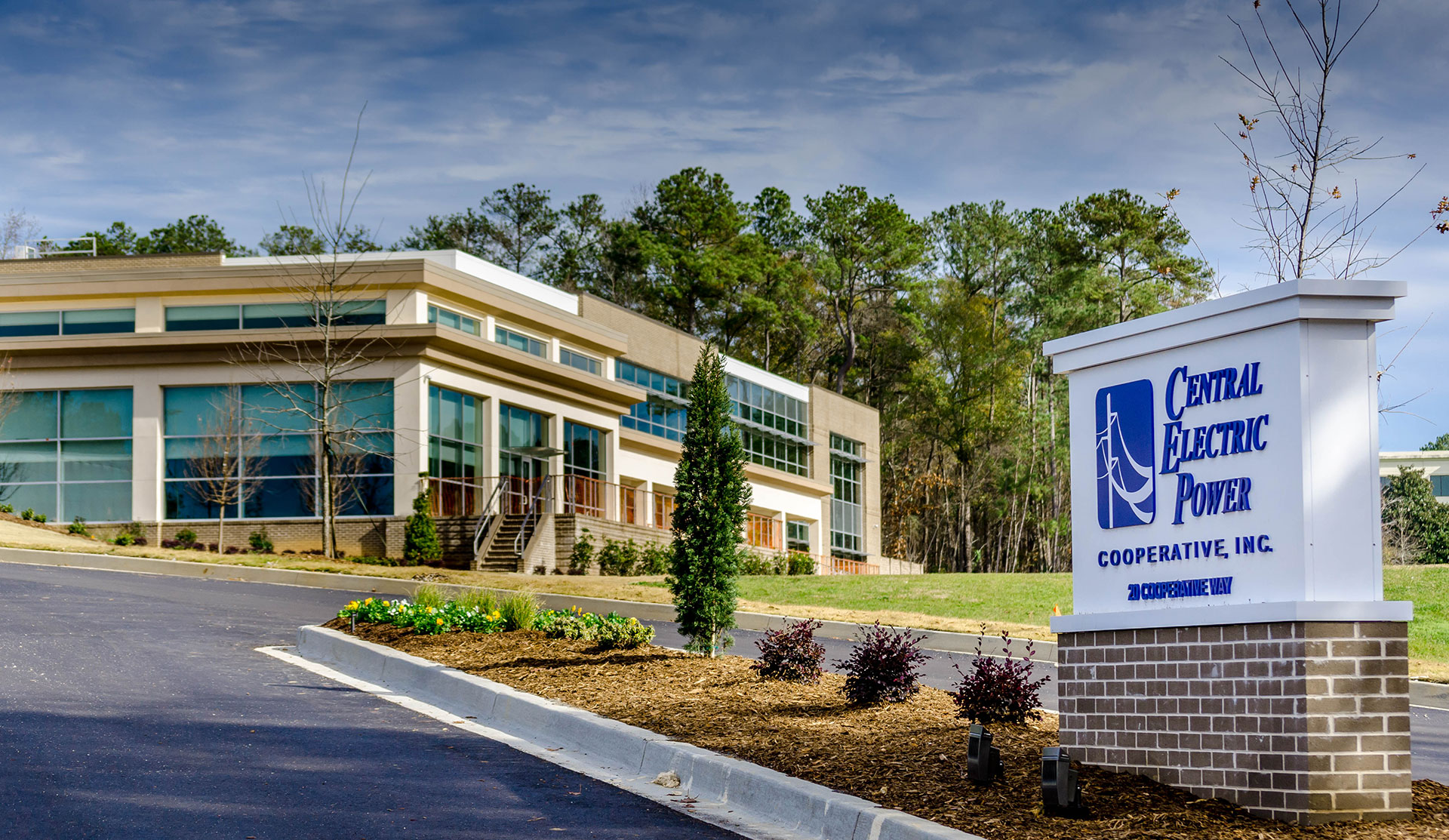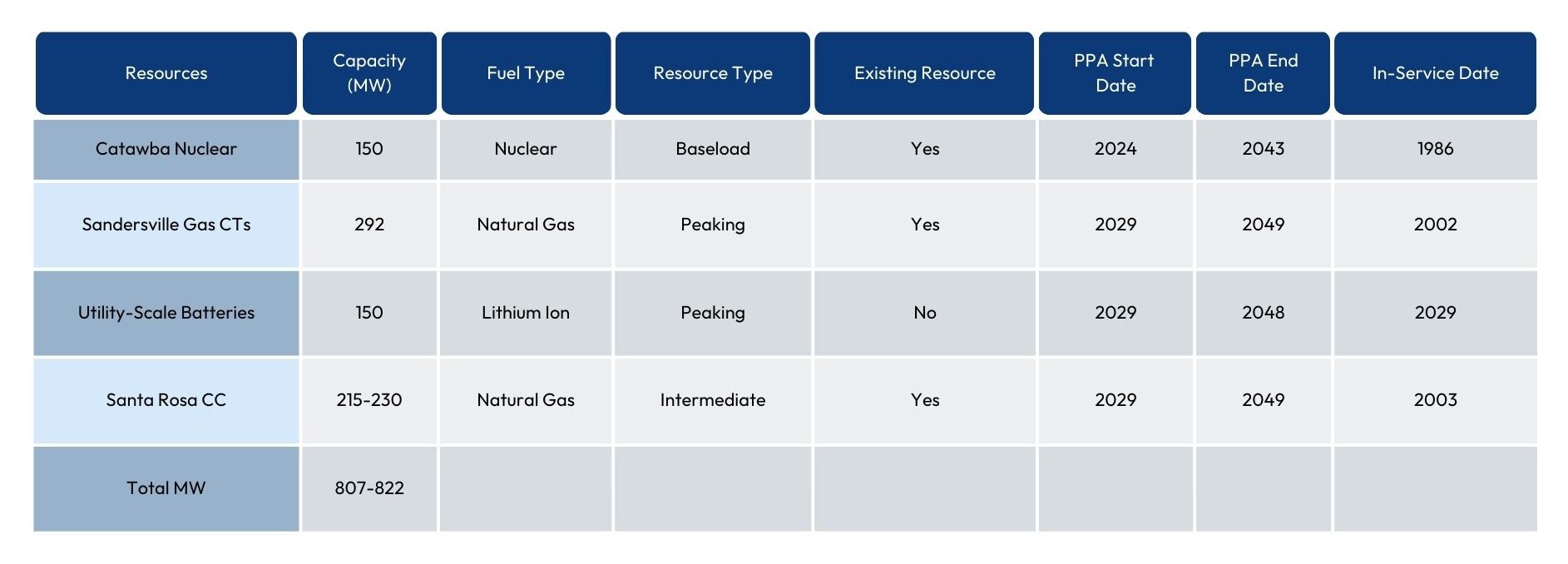OUR ENERGY PORTFOLIO
Central Electric Power Cooperative, Inc. (Central), a wholesale electric generation and transmission (G&T) cooperative, is owned by 19 independent, South Carolina distribution electric cooperatives, referred to as member-cooperatives. These member-cooperatives provide retail electric service to their member-owners in every county in South Carolina. Central supports them by providing power supply, transmission, economic development, member and energy programs and billing services.

In 1948, Central was created to pool resources for reliable and cost-effective wholesale power and transmission aggregation. Central’s member-cooperatives serve over 940,000 meters and more than 2 million residents via 79,000 miles of power lines, covering 70% of the state. Central provides wholesale power primarily through long-term contracts with the South Carolina Public Service Authority (Santee Cooper), Duke Energy Carolinas (Duke), and the Southeastern Power Administration (SEPA). In 2022, about 70% of Central’s member-cooperatives’ energy needs were met by zero-carbon or reduced carbon-emitting resources.
Over the past two decades, Central has made significant improvements and investments to diversify its generation sources, leading it to slash its coal power generation in half from 2005 to 2023.

WHOLESALE POWER SUPPLY
Central ensures a reliable and cost-effective power supply for its member-cooperatives through a diverse portfolio of contracts and resources.
PRIMARY CONTRACTS
- Santee Cooper: Central's main contract, known as the Coordination Agreement (CA), is an all-requirements contract providing approximately 77% of the electricity to member-cooperatives.
- Duke Energy: The Duke Power Purchase Agreement (PPA) supplies 21% of the electricity needs for member-cooperatives.
SUPPLEMENTAL RESOURCES
To supplement these primary contracts, Central maintains and supplies its member-cooperatives with additional power sources including:
- Renewable energy such as solar and battery storage systems
- Demand side management
- Hydroelectric power from SEPA
- Backup generators
POWER AND COSTS
As energy portfolio manager, Central is dedicated to managing power from all these sources to ensure a reliable power supply for its member-cooperatives at the lowest possible price. Each cooperative pays the same wholesale rates, though costs vary based on their size and member composition.
SANTEE COOPER CONTRACT
Central's contract with Santee Cooper, known as the CA, bundles generation and transmission services and is in effect until 2058. This arrangement is possible because of Santee Cooper's unique status with the Federal Energy Regulatory Commission (FERC). Central accounts for over 69% of Santee Cooper's firm demands and about 60% of its energy sales in 2022.
KEY BENEFITS AND OPERATIONS
- Contractual rights: Central has extensive rights in resource planning and access to operational information due to its significant share of Santee Cooper’s business.
- Joint committees: Central and Santee Cooper operate joint committees, like the Joint Planning Committee and the Joint Operating Committee, to oversee system operations and ensure best practices.
- Generation expansion: The CA requires Santee Cooper to involve Central in the planning of new generation resources. Central must opt into these proposals or secure its own resources if it opts out. This can include buying capacity, moving load to another utility, building new units, or implementing demand-side management and energy efficiency programs.
Santee Cooper’s current generation fleet includes a mix of various energy sources, ensuring a reliable supply for Central’s member-cooperatives.
In 2022, Santee Cooper announced that it would close its coal-fired Winyah generating station at the end of 2028. This closure, combined with increasing demand, created a gap in energy generation that needed to be filled. Under the CA, Santee Cooper suggested a new shared resource to meet this need, giving Central the option to participate. Santee Cooper proposed building a new natural gas-fired station at Winyah. Central chose not to participate in this proposed resource.
DUKE ENERGY CONTRACT
Central’s all-requirements contract with Duke is a traditional PPA running through 2045 and regulated by FERC. Central also has a Network Integration Transmission Service Agreement (NITSA) with Duke, ensuring equal treatment for Central's delivery points and Duke’s retail loads.
Duke, which relies heavily on nuclear power (51% of its energy), has been transitioning from coal to natural gas, renewables, and solar generation through market purchases and PPAs with third-party solar developers.
SEPA POWER SUPPLY
SEPA provides low-cost hydroelectric power from dams on the Thurmond, Russell and Hartwell reservoirs. This power benefits all 19 of Central’s member-cooperatives, reducing their costs and decreasing their reliance on Duke and Santee Cooper. SEPA's power is allocated directly to each cooperative, with Central managing the contracts as their agent. SEPA supplies 200MW of capacity and energy monthly to Central's member-cooperatives, with costs passed directly to each cooperative based on their allocation.
DIVERSIFIED RESOURCE PORTFOLIO
Catawba Nuclear is an existing nuclear facility in South Carolina with a PPA in effect from 2024 through 2043. This resource produces low-cost, carbon-free energy, an increasingly valuable resource.
Sandersville Gas Combustion Turbines (CTs) are peaking units providing lower cost capacity and intended to provide capacity during peak events.
Utility-Scale Batteries will consist of multiple four-hour lithium-ion batteries to be charged during off-peak hours when energy prices are low and should last 20 years.
Santa Rosa Combined Cycle (CC) is a natural gas-fired CC station in northern Florida. The resource will provide low-cost, risk-adjusted power with dependable capacity.
EVOLVING TO BEST SERVE THE NEEDS OF SOUTH CAROLINA
Central’s power supply portfolio is constantly evolving to better meet the needs of its member-cooperatives and ensure efficient resource planning. Additionally, rapid technological innovation in the power industry is shaping Central’s resource planning strategies.

